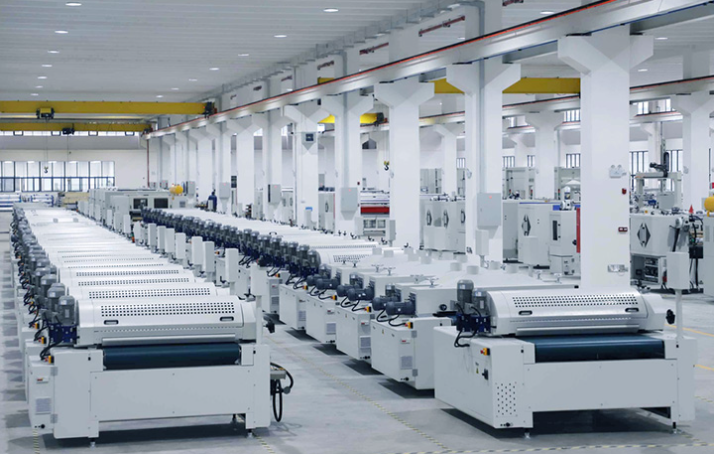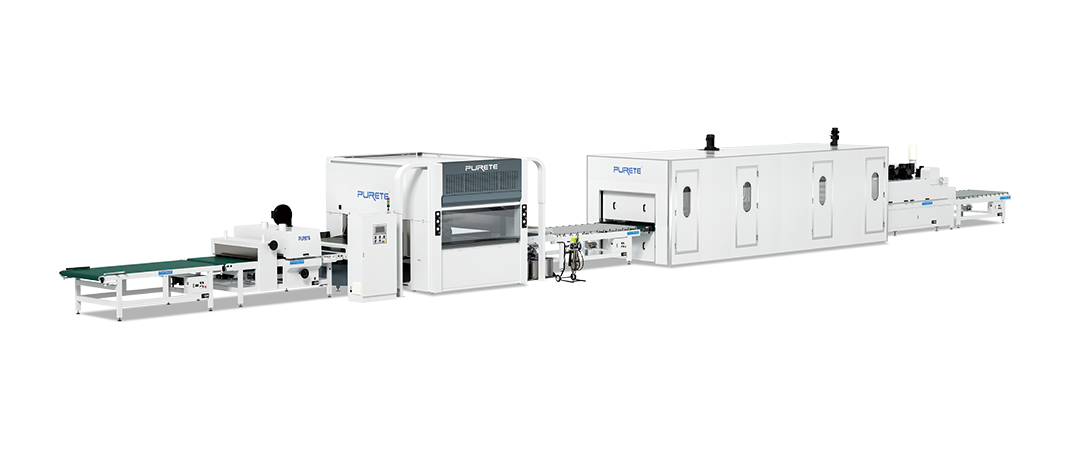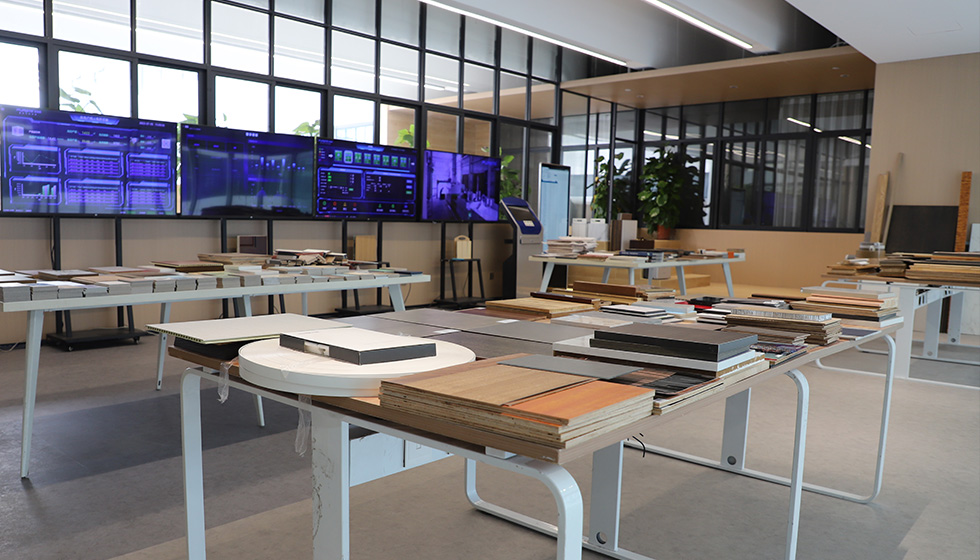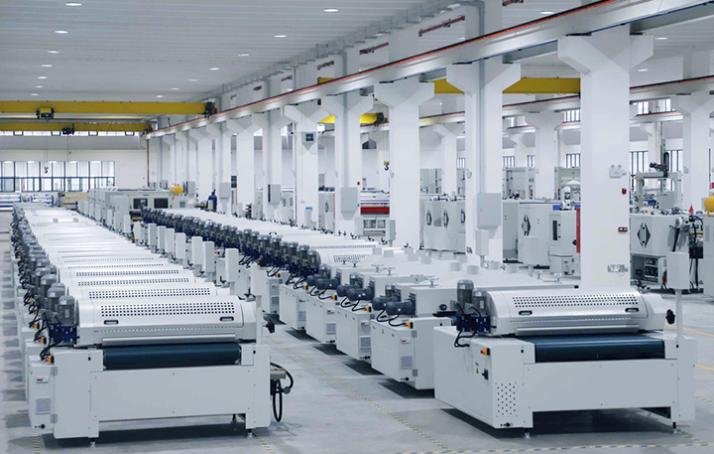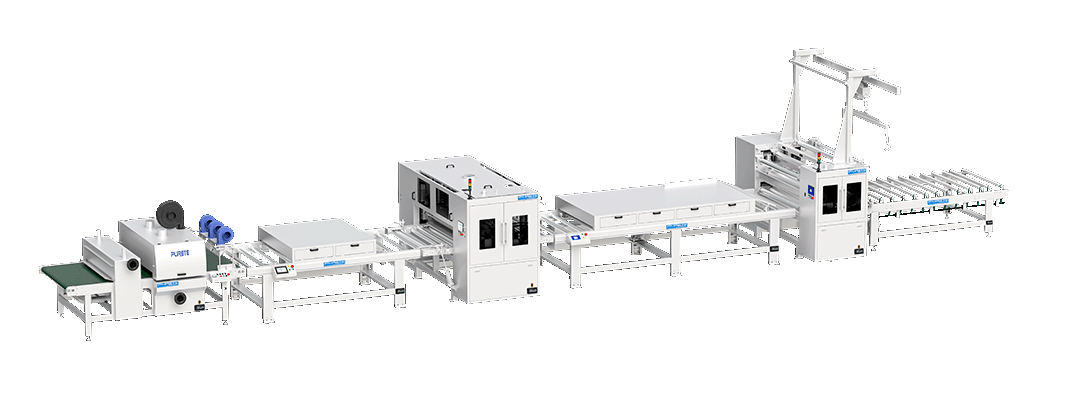Intelligent Coating Machine System Working Principle
 January 03, 2025
January 03, 2025 Hits:549second
Hits:549secondIntelligent coating machine systems have become a cornerstone in modern industrial production, enabling precise, efficient, and high-quality coating processes. These systems integrate advanced technologies such as automation, sensors, artificial intelligence (AI), and real-time data analysis. This article delves into the working principle of an intelligent coating machine system, exploring its components, functionalities, and applications.
1. Material Preparation and Supply
The first step in the coating process involves preparing the material to be applied. This can be liquid coatings, powders, or other substances. The system features:
Automated Material Supply: Intelligent systems are equipped with automatic feeders that ensure a consistent and steady supply of coating material to the application unit.
Material Monitoring: Sensors monitor parameters like viscosity, temperature, and flow rate, adjusting them as needed to maintain optimal material properties. This ensures uniformity in the coating process and reduces material wastage.
2. Substrate Transport
The substrate (e.g., film, paper, metal sheets) is transported through the machine with high precision. Key elements include:
Conveyor Systems: Substrates are moved at a controlled speed using conveyors or rollers.
Tension Control: High-precision tension control systems ensure the substrate remains flat and stable during the coating process, avoiding wrinkles or misalignments.
Positioning Accuracy: Advanced positioning systems ensure that the substrate aligns perfectly with the coating unit, critical for applications requiring high precision.
3. Coating Application
The coating application is the core function of the system. Different methods are used depending on the material and application:
Knife Coating: A blade spreads the coating material across the substrate for uniform thickness.
Roller Coating: Coating rollers transfer the material to the substrate, suitable for thin films.
Spray Coating: Nozzles atomize the material into fine particles and spray it onto the substrate. This method is ideal for irregular or complex surfaces.
The intelligent system continuously monitors the coating thickness, width, and uniformity. Real-time feedback allows adjustments to parameters such as coating speed, pressure, or material flow.
4. Drying and Curing
After the coating is applied, it needs to be dried or cured. Intelligent systems feature:
Drying Mechanisms: These can include hot air, infrared (IR) heating, or ultraviolet (UV) curing, depending on the material requirements.
Energy Efficiency: Smart controls optimize energy consumption by adjusting drying parameters based on the coating material and ambient conditions.
Real-Time Monitoring: Sensors measure temperature, humidity, and drying speed, ensuring consistent results.
5. Inspection and Feedback
Inspection is a critical stage where the system evaluates the quality of the coated substrate:
Online Quality Inspection: High-resolution cameras and sensors detect defects such as uneven coating, bubbles, or scratches.
Thickness Measurement: Laser or ultrasonic devices measure the coating thickness to ensure it meets specifications.
AI-Driven Feedback: The system uses AI algorithms to analyze inspection data and adjust process parameters in real-time, maintaining quality standards.
6. Finishing and Output
Once the coating process is complete, the substrate is prepared for further processing or packaging:
Cutting and Trimming: Automated cutting tools ensure the substrate is trimmed to the desired size.
Winding and Packaging: The finished product is rolled or stacked, ready for transport.
Intelligent Features
The integration of intelligent technologies sets these systems apart from traditional coating machines. Key features include:
Data Collection and Analysis: Sensors collect vast amounts of data during operation. Advanced analytics provide insights to optimize performance and reduce downtime.
Adaptive Control: The system adjusts parameters automatically based on real-time data, enhancing efficiency and product quality.
Predictive Maintenance: Machine learning algorithms predict potential failures, enabling timely maintenance and reducing unexpected downtimes.
User-Friendly Interfaces: Modern systems feature intuitive control panels, allowing operators to monitor and manage processes easily.
Applications
Intelligent coating machine systems are widely used across industries:
Electronics: Applying protective coatings on printed circuit boards (PCBs) and other electronic components.
Medical Devices: Coating drug delivery devices, diagnostic strips, and implants.
Automotive: Coating car parts with anti-corrosion or aesthetic finishes.
Packaging: Enhancing packaging materials with protective or decorative layers.
Renewable Energy: Applying coatings to solar panels and wind turbine components.
The working principle of intelligent coating machine systems revolves around precision, efficiency, and adaptability. By leveraging advanced technologies like AI, automation, and real-time monitoring, these systems ensure high-quality coatings while reducing material waste and energy consumption. Their versatility and reliability make them indispensable in various industries, from electronics and medical devices to automotive and renewable energy. As technology continues to evolve, intelligent coating machines are poised to play an even more significant role in driving innovation and sustainability in manufacturing.
